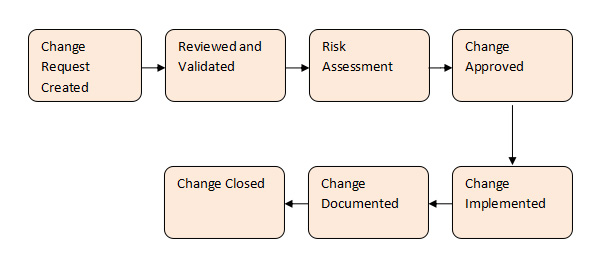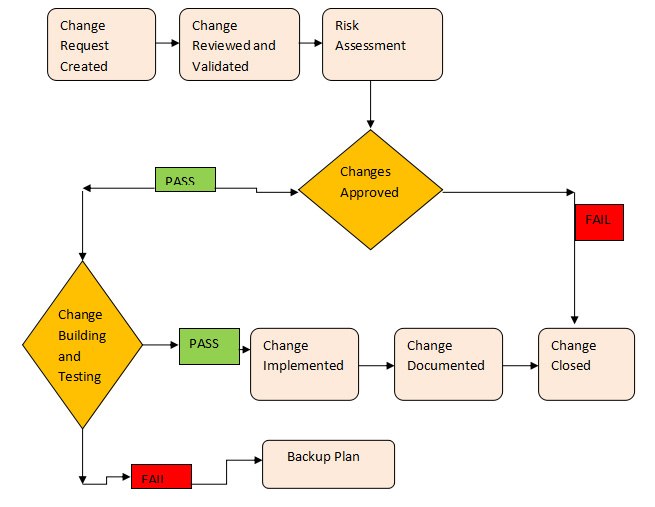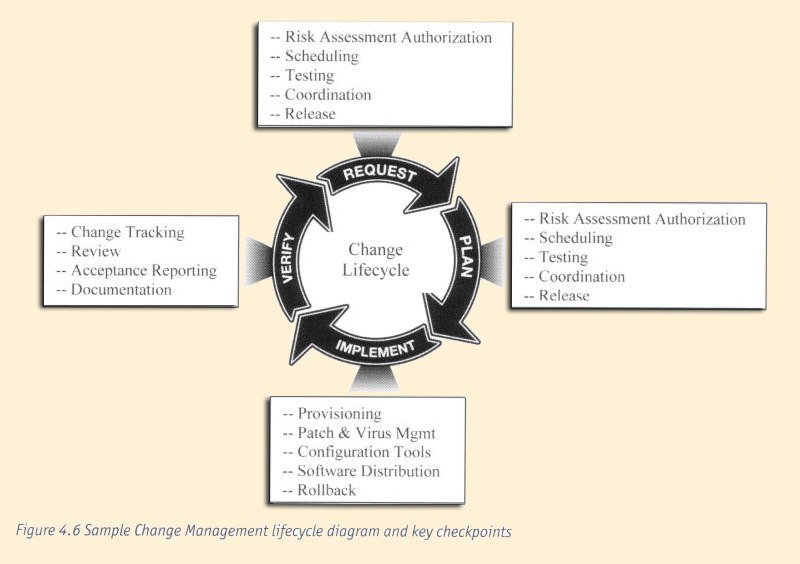Why ITIL Change Management Is Necessary For A Business Process
Change is a constant feature in any work environment. A process undergoes changes from time to time. Managers develop new ideas with team members to improve services. This in turn leads to better customer service.
What is ITIL Change Management ?
It is a set of best practices and guidelines for effective IT service management. The principles of ITIL change management find application across a wide variety of industries. ITIL Change management follows a process based approach.

Source: spiderwebtechs.com
What is the definition of change ?
Change can be any action that has the potential to disrupt existing workflows. Changes in the business process include restructuring existing models or introducing new models. They include anything from adding, removing or modifying existing work models.
There are many questions that come to mind like
- What happens in an ITIL change processes ?
- Does it have any effect on the productivity ?
- Do processes become more efficient after making changes ?
We intend to answer these questions and give you a clear idea with the following overview. Here are seven sections highlighting the features of ITIL change management.
Section I: Purposes of ITIL Change Management
- It minimizes operational risks.
- It uses standardized procedures and methods
- It enables less disruption of IT services
- It lowers the risk due to the changes.
Section II: Objectives of ITIL Change Management
- To ensures changes are effective.
- To covers all associated risks.
- To increase productivity of resources.
- To improve customer satisfaction.
- To set priority of change as per business needs.
- To plan, implement and review changes.
- To record and document the changes.
Section III: Scope of ITIL Change Management
Anything included in the IT delivery process forms the scope of change. It includes service assets like:
- Physical servers and storage
- Virtual servers and storage
- Third party software of external service providers.
- Copyright documents
Any addition, removal or modification to service assets affects the scope of the change.
Section IV: Roles in ITIL Change Management
Change Initiator: Any team member can initiate a change request. The idea for making the change can be from various resources. Service level team members constantly interact with customers.
The user engagement allows them to identify the immediate needs from a client's viewpoint. The initiators help in testing and documenting a change before large scale deployment.
Change Coordinator: The coordinator receives change requests from initiators. They check for validity and take a decision to approve or discard the change. They ensure the changes are made as per merit of the case. Keeping a record of ideas and change requests is a responsibility of this role.
Change Manager: The change manager assesses the impact of risk associated with a change. Change managers can be a single person or a group of persons. They evaluate the change process for risk impact and the extent of its effects.
Their roles vary depending on the size of the organization and the IT service delivery model. They set priorities for working on change requests and oversee the approval. They keep records of approved changes at every stage of development with constant updates.
Change Advisory Board: The board is an empowered group of persons with higher authority. They conduct discussions at the higher level with change managers. The board consists of skilled people who handle risk related decisions. When the risk impact is very high and can affect the change scope, they have the last word. CAB is sometimes referred to as the emergency change advisory board (ECAB). They handle emergency situations for extreme risk projects and are the final authority. They assess the resources required, timelines for change and delivery impact.
Section V: Procedures of ITIL Change Management
1.Making a change request:
Change initiators can be any of the team members. A new idea can come from any level of the team structure. Constant interaction with customers gives an insight into their business needs. The initiators make a list of such needs and present them to coordinators. The coordinators will see if the request is valid in the first place. If it is practical they go ahead with the change.
2.Planning the change:
Change coordinators make plans when they receive requests. They keep a record of accepted and discarded requests. They check if the request is valid and give the go ahead. Procedures are laid out for the new process workflows. Measures to handle failures are in place in case of failure.
3.Change approval:
Change managers approve change requests. They make plans to execute changes. They are involved in procedures for building, testing and deployment of new changes.
4.Change implementation:
The change is deployed across the service assets in the delivery process. The coordinators ensure transition of changes at the service level.
5.Closing the change:
When changes perform as expected, change managers close the change request.
Section VI: Change Categories in ITIL Change Management
There are three categories of change.
Standard Change: A standard change is easy to implement and common in an IT processe. The risk is low for a standard change and do not need prior approval from senior managers. The workflow for a standard change is as follows:

Normal Change: A normal change needs approval from senior management for an IT process. The potential risk for service delivery is assessed before making this change. Change managers work on priority basis to achieve the end results. The workflow for a normal change is as follows:

Urgent Change: An urgent change happens during emergency situations and needs approval of senior managers. They can vary from deadline expiry, client needs. The workflows are expedited in this stage to reach the desired targets. The workflow is the same as normal changes.
Section VII: ITIL Change Management Process

Source: hci-itil.com
The ITIL change management process consists of the following steps:
Creating a change request: A team member raises a change request after proving its need. This is based on customer feedback and ideas from co-workers.
Reviewing a request: The change requests are evaluated by coordinators or change managers. They discard unwanted ideas and impractical solutions. The validity of making the new changes are verified at this stage.
Assessing change risk: A change involves risk to the functioning of the existing process. No change is possible without causing some amount of risk. The risks include new project costs, resource allocation and change scope.
Approving a change: Once the change passes review and risk assessment, it gets approval. The change managers include the scope of change and risks when approving change requests.
Implementing a change: The changes get implemented in the process after proper approval. Organizations use different implementation methods to make the changes. These changes are recorded by teams for future changes.
Closing a change: A change request is closed when its objectives are achieved. If the proposed change is working as expected, then there is no need for more work. The change logs help for making future updates.
Project managers and working professionals can seek to improve their skills by taking up a course in ITIL certification training. There are bright career prospects for those with an ITIL certificate when applying for different managerial roles. This makes the ITIL certification all the more desirable for career growth.
